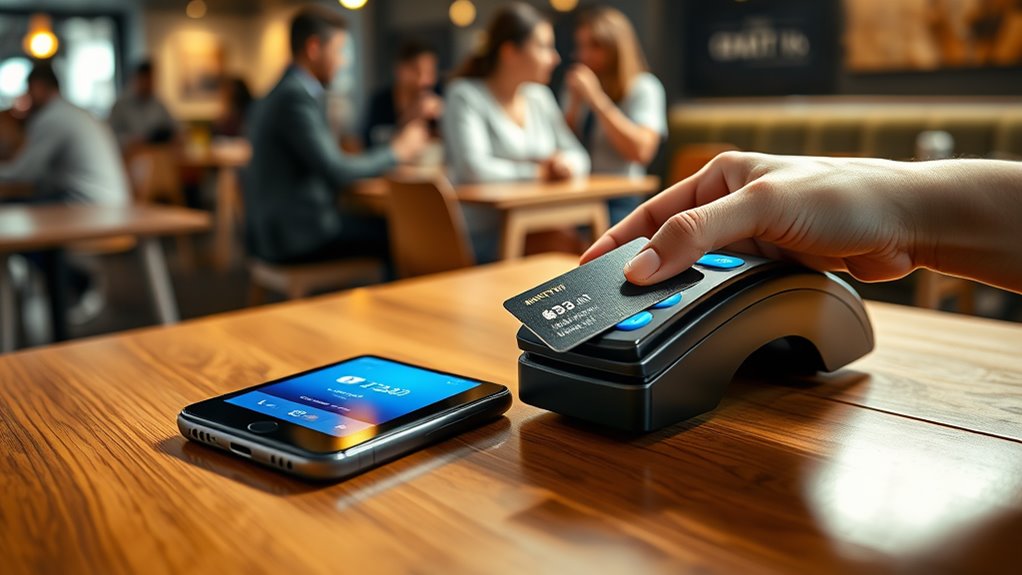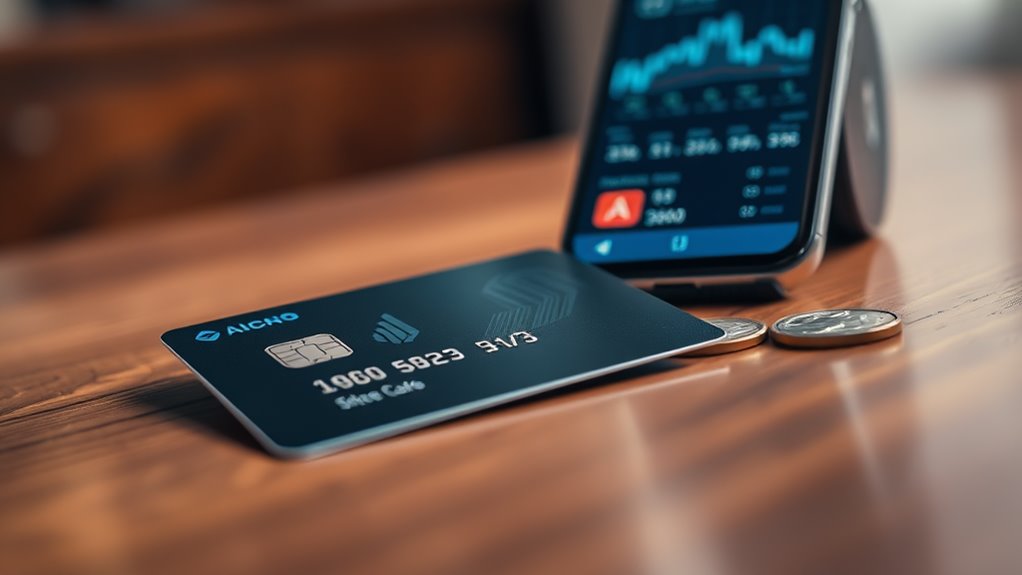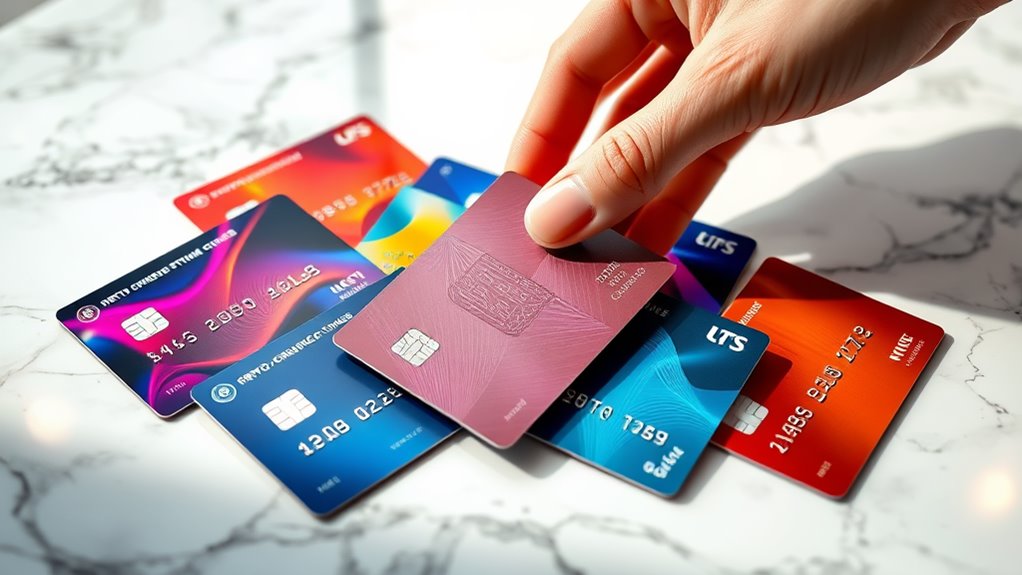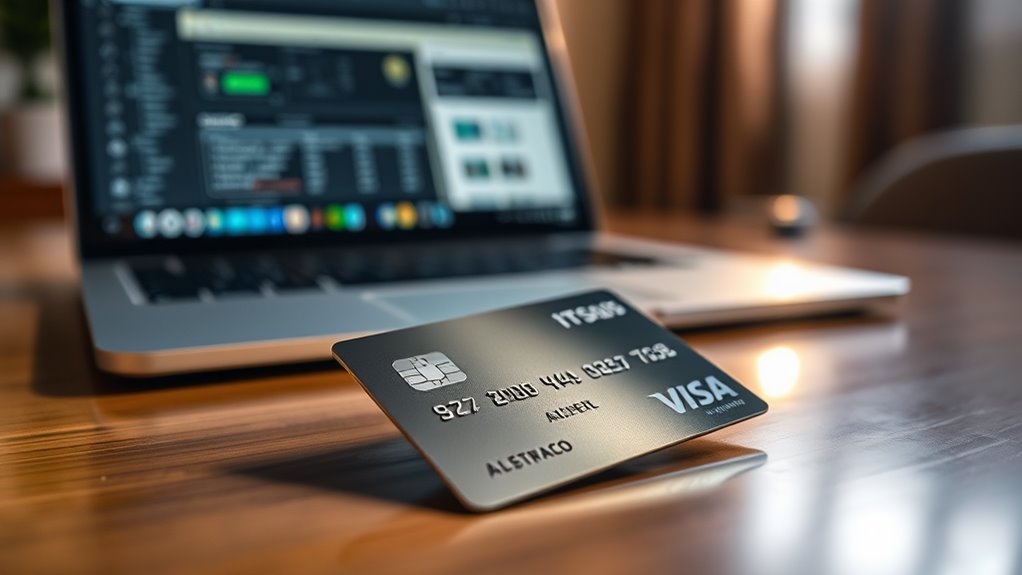
Crypto Debit Cards: How Do They Work?
Crypto debit cards work by linking directly to digital wallets, allowing users to spend their cryptocurrency at merchants and ATMs without converting to fiat currency first. Transactions occur through established payment networks, converting cryptocurrency to cash in real-time. These cards offer benefits like cashback rewards and enhanced security features. However, they also carry risks, including price volatility. Understanding their functionalities and security measures will provide better insight into how they integrate with both traditional finance and cryptocurrency.
Key Takeaways
- Crypto debit cards link directly to cryptocurrency wallets for seamless spending at merchants and ATMs without prior conversion.
- Transactions convert cryptocurrency to fiat currency in real-time, managed by the card issuer or third-party services.
- These cards operate on established payment networks like Visa and Mastercard, ensuring wide acceptance globally.
- Users benefit from cashback rewards in cryptocurrencies and enhanced security measures like two-factor authentication and blockchain encryption.
- Crypto debit cards require available funds, as they do not offer a credit line, promoting financial responsibility.
Understanding Crypto Debit Cards

Understanding crypto debit cards is essential in today’s digital financial landscape, especially as more individuals seek to integrate cryptocurrencies into their everyday transactions.
These cards are linked to digital wallets and allow users to spend their cryptocurrency directly, converting it into fiat currency at the point of sale. Unlike credit cards, which offer a line of credit, crypto debit cards require users to have funds available in their wallets.
Various types of crypto debit cards exist, including prepaid options for budgeting and hybrid models that combine credit and debit features. Major networks like Visa and Mastercard often back these cards, enhancing their usability.
Users enjoy benefits such as lower fees, financial flexibility, and rewards, making these cards an appealing choice for many. Additionally, crypto debit cards can be linked to crypto payment gateways, enabling seamless transactions and enhanced security.
How Transactions Are Processed

When a user makes a purchase with a crypto debit card, the transaction process begins with the card being linked directly to their cryptocurrency wallet.
The cardholder initiates the transaction by using the card at a merchant or for an ATM withdrawal. The card operates through established payment networks like Visa or Mastercard, which facilitates widespread acceptance.
The cardholder uses the crypto debit card at merchants or ATMs, benefiting from the extensive acceptance of Visa and Mastercard.
Upon completing the purchase, the card automatically converts the cryptocurrency into fiat currency in real-time, using current exchange rates to determine the value.
This conversion is managed by the card issuer or a third-party service, allowing users to spend cryptocurrencies like Bitcoin or Ethereum at any merchant that accepts traditional card payments, enhancing convenience and accessibility for everyday transactions. Additionally, this integration with a reliable payment platform allows users to benefit from enhanced security and reduced transaction costs.
Benefits of Using Crypto Debit Cards

The benefits of using crypto debit cards are numerous, appealing to both seasoned cryptocurrency users and newcomers alike.
These cards simplify the spending of digital assets, eliminating the need for prior conversion. They are widely accepted by millions of merchants, enhancing global usability.
Key advantages include:
- Convenience: Spend crypto directly without conversion hassles.
- Rewards: Many cards offer cashback in cryptocurrencies.
- Security: Features like two-factor authentication help protect accounts.
- Lower Fees: Some cards have reduced transaction costs compared to traditional options.
- Accessibility: They bridge the gap between traditional finance and crypto, allowing seamless transactions.
Types of Crypto Debit Cards Available

Various types of crypto debit cards are available to cater to the diverse needs of users in the cryptocurrency market. These cards can be categorized based on their features, supported cryptocurrencies, and regional availability. Below is a summary of some key types:
| Card Type | Key Features | Supported Cryptocurrencies |
|---|---|---|
| Crypto.com Visa Card | Up to 5% cashback | 19 cryptocurrencies |
| Binance Card | Up to 8% cashback | Several major cryptocurrencies |
| Coinbase Card | Up to 4% cashback | 7 cryptocurrencies |
| Bybit Crypto Card | Up to 10% cashback | EEA and Australia |
These cards offer various rewards and functionalities, making it essential for users to choose based on their requirements. Additionally, many of these cards are linked to businesses accepting cryptocurrencies, which facilitates easier spending.
Security Measures and Risks Involved

As cryptocurrency continues to gain popularity, understanding the security measures and risks involved with crypto debit cards becomes essential for users. Several security protocols aim to protect users:
- Multi-Signature Authentication: Requires multiple approvals for transactions.
- Two-Factor Authentication (2FA): Combines passwords with mobile authentication codes.
- Biometric Authentication: Uses unique physical traits for user verification.
- Blockchain Encryption: Secures transactions to minimize fraud risk.
- Cold Storage: Keeps funds offline to avoid cyber threats.
However, risks exist, including cryptocurrency volatility, platform reliability issues, and potential data privacy concerns. One crucial step users can take is to maintain backups of private keys securely offline, which is vital for protecting their assets.
Users must remain vigilant, choosing reputable providers and monitoring transactions closely to guarantee their financial security while maneuvering the evolving landscape of crypto debit cards.
Frequently Asked Questions
Can I Withdraw Cash Using a Crypto Debit Card?
Yes, cash can be withdrawn using a crypto debit card at compatible ATMs. This process involves converting cryptocurrency into local fiat currency, usually accompanied by fees and potential exchange rate fluctuations during the transaction.
Are There Specific Cryptocurrencies Supported by Each Card?
“Different strokes for different folks” aptly describes crypto debit cards, as each provider uniquely supports specific cryptocurrencies. Major players like Crypto.com and Binance offer extensive options, while others focus on a narrower selection for targeted users.
How Are Rewards Calculated on Crypto Debit Cards?
Rewards on crypto debit cards are calculated based on transaction types, card tiers, and monthly limits. They may include cashback, staking incentives, and can be distributed instantly or weekly, often in the issuer’s native cryptocurrency.
What Happens if My Card Is Lost or Stolen?
When a card is lost or stolen, immediate notification to the issuer is crucial. Prompt reporting minimizes financial liability, while monitoring account activity and securing linked wallets guarantees protection against unauthorized transactions and potential losses.
Are There Age Restrictions for Obtaining a Crypto Debit Card?
Age restrictions for obtaining a crypto debit card generally require users to be at least 18 years old. However, some platforms offer custodial accounts for minors with parental consent, addressing regulatory compliance in cryptocurrency management.
Conclusion
In conclusion, crypto debit cards bridge the gap between digital currencies and everyday spending. They allow users to seamlessly convert cryptocurrencies into traditional currency for transactions, much like a bridge spanning a river. While they offer various benefits, such as convenience and potential rewards, users must remain vigilant regarding security and potential risks. As the world of finance continues to evolve, understanding these tools can empower individuals to navigate their financial landscapes with confidence.












